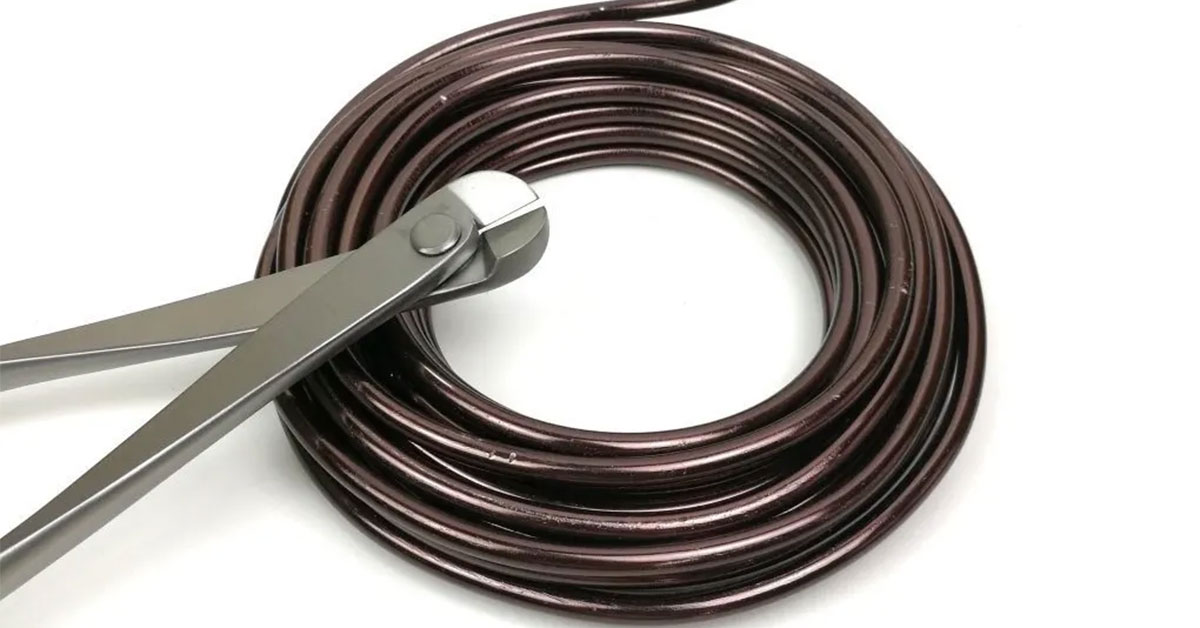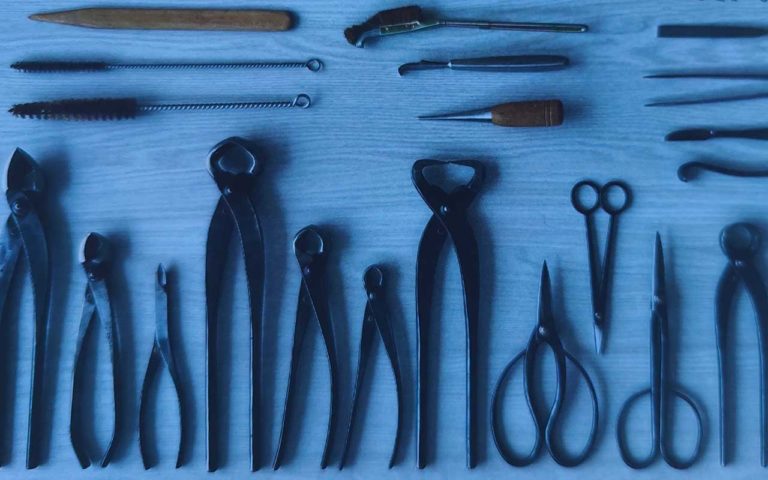In the intricate world of bonsai, the artistry of shaping and styling miniature trees relies on meticulous attention to detail.
One fundamental technique that plays a pivotal role in this process is the use of wires. Bonsai enthusiasts and cultivators must carefully choose between copper and aluminum wires to « wire » or « ligature » the bonsai trunk and branches, with each material offering distinct advantages and considerations.
The selection of the appropriate wire can significantly influence the outcome of your bonsai creation.
In this article, we delve into the nuanced choices between copper and aluminum wires for bonsai tree ligaturing. We’ll explore their strengths, flexibility, ideal use cases, and the critical aspect of selecting the proper wire diameter and length to ensure your bonsai’s success.
Copper vs aluminium
When it comes to bonsai tree ligaturing, the use of wires is crucial to shape and style the branches.
The choice of wire material is an important consideration, with copper and aluminum being the most commonly used options.
Here’s a comparison table summarizing the key differences between copper and aluminum wire for bonsai tree ligaturing:
| Wire Material | Best Use | Strength & Durability | Flexibility & Ease of Use | Suitable for Beginners |
|---|---|---|---|---|
| Copper Wire | Conifers | High | Easy to manipulate | May require more experience |
| Aluminum Wire | Deciduous Trees | Moderate | Lightweight and flexible | Ideal for beginners |
Aluminium is mostly used to wire deciduous trees, copper for conifers.
Copper wire is known for its strength and ability to hold branches in place. It is also easy to manipulate and can be wrapped tightly without breaking or damaging the branches. Copper wire is particularly suitable for ligaturing thick branches and those with a lot of resistance.
On the other hand, aluminum wire is lightweight and flexible, making it easier to handle and manipulate. It is a great choice for shaping delicate and thin branches due to its ability to hold them in place without leaving marks.
For beginners in bonsai ligaturing, aluminium wire could be the optimal choice. Its flexibility and ease of use make it ideal for shaping and creating desired bends in the tree’s branches and trunk. This type of wire is affordable, readily available, and can be easily cut and adjusted as needed, making it suitable for those new to bonsai techniques.
However, aluminum wire is not as strong as copper and may not be suitable for shaping thicker branches. It is more prone to breaking if not handled carefully.
Choosing the Proper Wire Diameter for Bonsai Trees
Choosing the proper wire diameter is an essential aspect of bonsai tree care.
The wire is a crucial tool used to shape and train the tree’s branches and trunk. A wire that is too thin may not provide enough support, while a wire that is too thick can damage the tree and leave permanent scars.
The wire should be selected based on the size and flexibility of the branches being trained. For smaller, more delicate branches, a thinner wire should be used to provide gentle support without causing harm.
Thicker branches will require a heavier gauge wire to hold them in place.
It is important to consider the thickness of the tree’s branches and trunk when choosing the wire diameter, as well as the desired shape and style of the bonsai.
It may be necessary to use different wire sizes on different parts of the tree to achieve the desired results.
There are various wire diameters for ligatures, ranging from 0.5mm to 7mm, with a 0.5mm increment between each diameter.
- Aluminium wire must be half the diameter of the branch to ligature. You can use a bigger wire but the risk is to break the branch. If the branch’s diameter is 2cm, the wire must be 1cm.
- Copper wire must be one third the diameter of the branch to ligature. If the branch’s diameter is 3cm, the wire must be 1cm.
Wire length for bonsai trees
Using a wire 1.5 times longer than the branch to be wired is a commonly recommended practice in horticulture and bonsai. This extra length allows for flexibility in shaping and positioning the branch while securing it to the main trunk or structure.
The excess wire can be wrapped multiple times around the branch for added stability. Additionally, the longer wire enables adjustments and corrections if needed during the shaping process.
So if the branch is 30 cm long, you need to use a 45 cm long wire.


